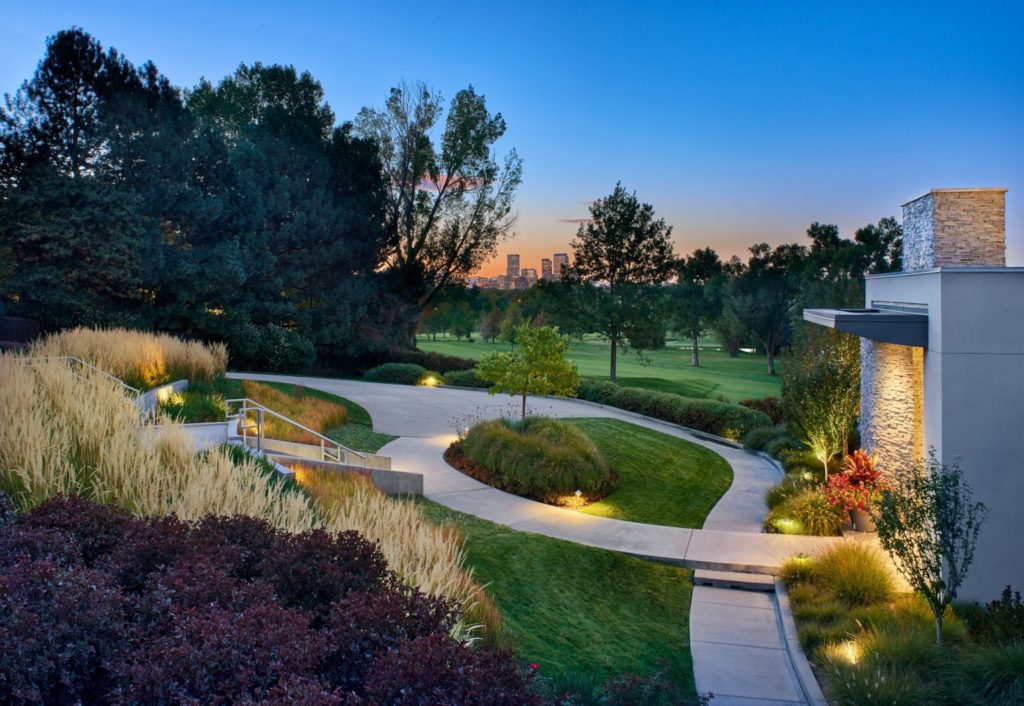At least three and up to seven people are involved in each professional landscaping project. Depending on the size of the companies involved, a couple people from the grower and supplier side, one to four people from landscaping firms, and one or two representatives from the client are part of the process.
The timeline is often just as complicated with some projects spread out over two years or more, when lots of changes can happen. Even with shorter timelines of a few months, changes in plant availability, client preferences and other details are inevitable.
Landscape designers Alicia Bell and Lisa Rivera agree that communicating with suppliers early in project planning would be nice, but both admit that it’s probably not possible to get everyone in the process on the same page so that what is grown will always match what landscapers want or need. The variability of projects over time as well as shortages in plant supplies are just too powerful of forces.

“It’s crazy how many people’s hands touch a tree to get it to a job site,” said Rivera, Owner of Mosaic Landscape and Design in Lakewood, Colo. She serves high-end residential clients in the upscale neighborhoods of Denver, mostly with small crews but sometimes as a one-woman operation.
She spent several years working in plant care and customer service for nurseries, so she approaches her projects with an understandingof the challenges of matching landscape architect expectations about plant selections. She shares this perspective with clients, and tries to educate them about what’s available, but they can still be disappointed or even angry when their exact plant pick does not show up.
Bell has worked on the design team at Designs By Sundown in Littleton, Colo. for two years, and recently became a client representative in the maintenance division. The firm has 200 to 300 staff members during the season, working on commercial and residential projects.

“I am the central communication between the client, and all departments we have at Designs By Sundown. It’s a lot of communication in a short amount of time,” she said. “I don’t believe we have time to contact growers unless a project is very large. Early contact with suppliers is a goal, though including growers in the design phase would likely be time wasted when clients want changes in the designs.”
Client Change Requests
Early in the process with clients, the landscape design includes only general descriptions of plants, such as three deciduous trees and their location. As plans finalize, plant choices become more specific, and clients approve the selections.
During the process, “clients may change their minds and we rotate planting ideas. Project timelines also change, and finances ultimately dictate what is installed,” she explained.
Bell’s colleagues work with local nurseries and growers to source plants for the design work. Weather is a factor for pushing schedules or damaging plant material causing shortages, which often results in finding substitutes before or during installation.

“We’re trying to put the right plant in the right place, but it’s often hard when we’re planting and needing to make substitutions,” she added.
Account managers in nurseries and greenhouses are helpful in making suggestions, whether it be different sizes, varieties or species. The goal is always trying to keep as close as possible to what the client initially enjoyed.
For projects with shorter timelines, like many of Rivera’s, she often starts the communication with clients in the late winter or early spring. By that time, even if she did communicate with wholesalers, they have already made their growing and ordering decisions months or even years before, due to growing cycles.
“I’m definitely interested in telling a grower about my plant palette and asking them to supply it. That conversation is important, but I just think there’s not enough plant material being grown. To satisfy all the landscapers, someone needs to open another nursery,” Rivera said.
Lack of Availability
Plant shortages are not only due to the high demand of a good economy, but also caused by the shrinking number of nurseries, as several have closed over the last decade. Some of the remaining nurseries are not taking new customers. With less access to plant material, it’s sometimes impossible for landscapers to find the product or size requested by clients.
“I talk to guys at ProGreen but I can’t purchase from them,” she said. “Plus, there are so few tropical plant nurseries. Even though our season is short, people want the California or Florida look. I use a lot of foliage and tropicals and they’re hard to get. The hurricane that ruined supplies two years ago is still having an impact. I place my orders early but just don’t get my plants.”
She remembers back in 2005, when she was working at Timberline Gardens, landscape designers would come in, load up a cart, stack the loads on tables marked off with tape, and then pick them up later. Timberline closed, and that way of reserving plants is no longer possible at other garden centers, since inventory is so tight, she said.
“The only way to secure it is take it earlier than needed, have a holding yard, and risk it dying due to weather,” she said. “I created a small greenhouse in my office to keep annuals until they go to clients’ properties. Ideally, I get oleanders in March and keep them around until May, but then I have to worry about the cost of keeping them alive and if they’re going to die or just not look as great.”
Bell tries to prepare clients for the possibility of plant changes, but it’s challenging to explain the need to find other materials, even for hardscaping. “If the design process has continued for months or years, it’s almost inevitable that materials will change,” she said.
She notices that certain designers like to repeat plant material, because of their reliability and familiarity with how those plants will look year after year. There’s a fear of using new plant material without personal experience or knowing the longevity.
“I was raised in Colorado learning the plant material, and truly love it. It’s a challenge to incorporate native plant material in designs if clients are coming from different climates and prefer water-loving species. I would really like to see a shift where people want to see native plants thriving in this environment as opposed to planting something that will merely survive,” she said.
More Education & Information
Grower’s catalogs are very helpful, and designers use them as references. Online catalogs would be most helpful.
“Certain clients who are interested in seeing plant material can take tours of the nurseries, and we will tag trees as they are able to choose what goes in the landscape per the design,” she added.
She also suggests the idea of lunch and learns for the sales teams, where growers and experts share planting advice, photos and descriptions of plants that would enhance designs. Another suggestion is to set up roundtable discussions with representatives from various departments to talk with growers to better coordinate prior to the start of the busy season.
Rivera said Arbor Valley Nursery, where she previously worked, invites landscape architects out to educate them about product availability and selection. She has also attended ProGreen presentations about plant availability and shortages, but said she would like to see even more discussion of these topics annually and throughout the year. More education and tours of nurseries and greenhouses to better prepare architects and city planners with information about what plant palettes are realistic would also be useful.
With fewer plant vendors but more and more landscaping business, relationship building up and down the supply chain is now more important than ever. “It’s an advantage for an architect to say to their clients, ‘I have this relationship with a nursery, and this is what you can expect,’ so as not to sell unreal expectations,” she said.








